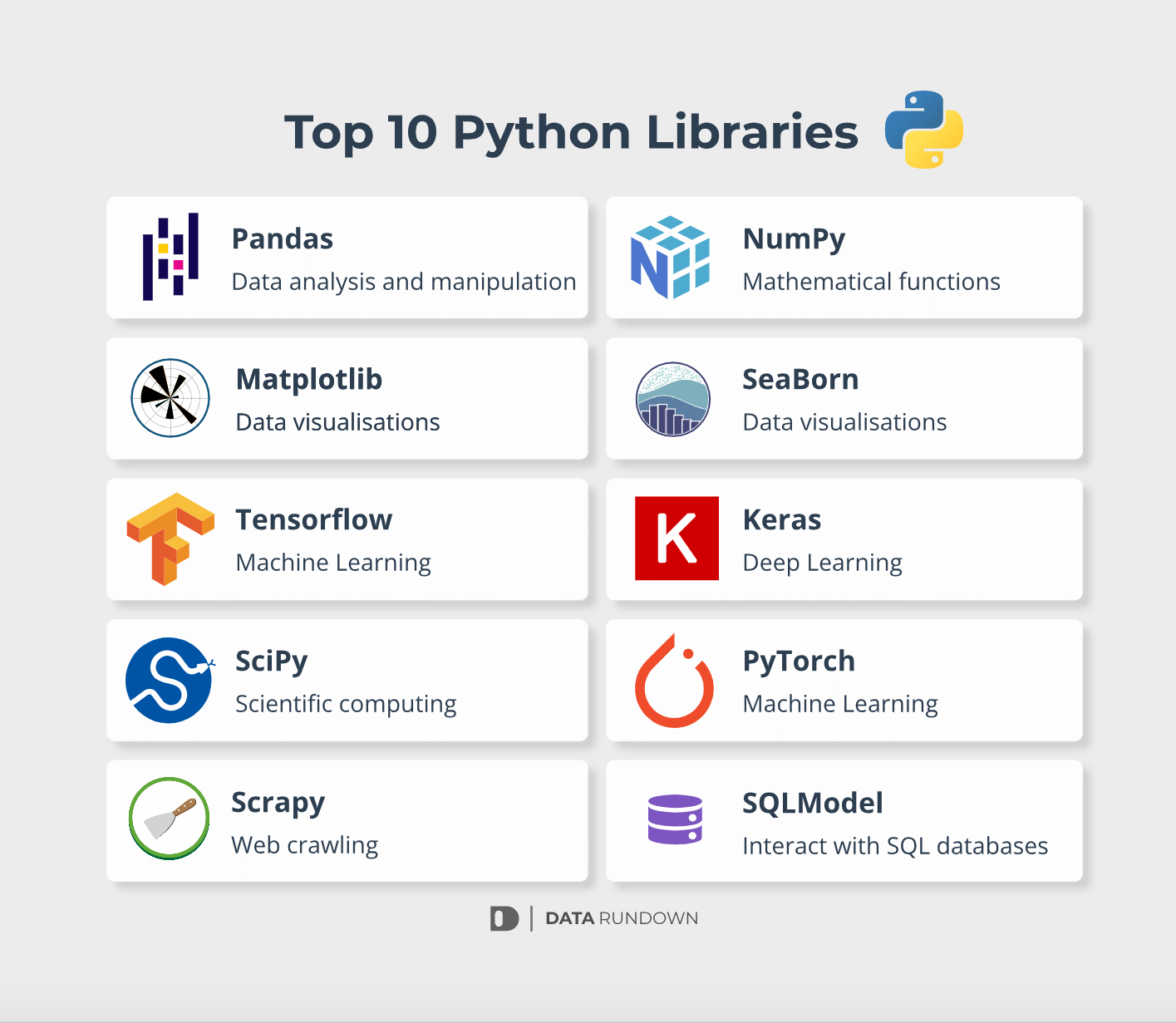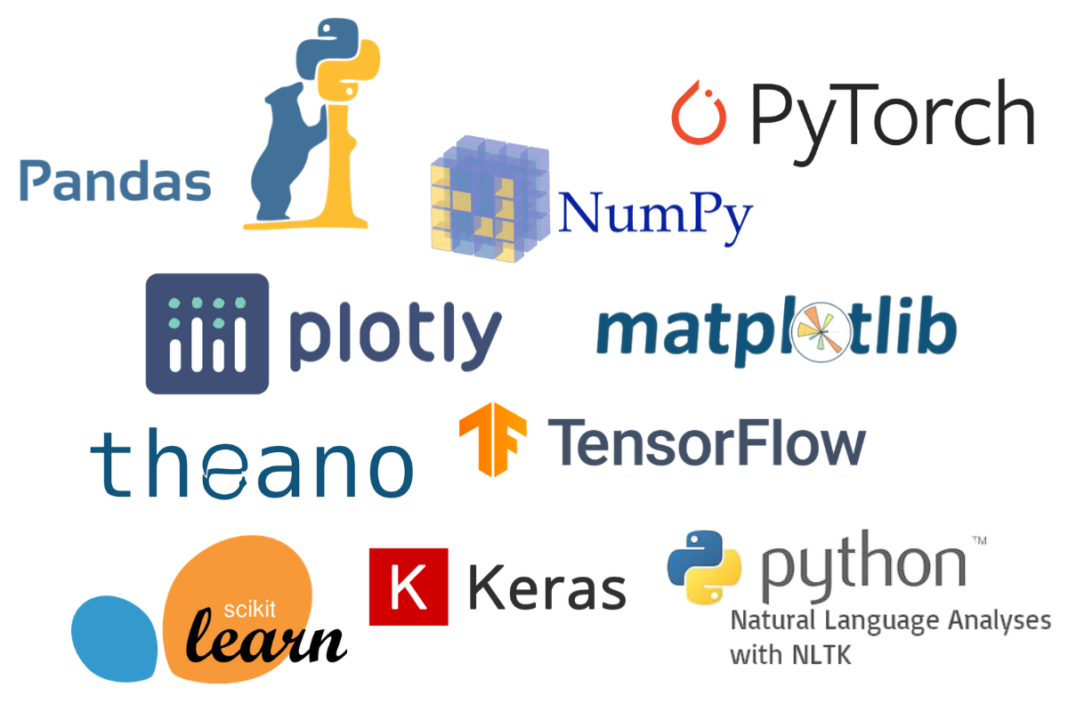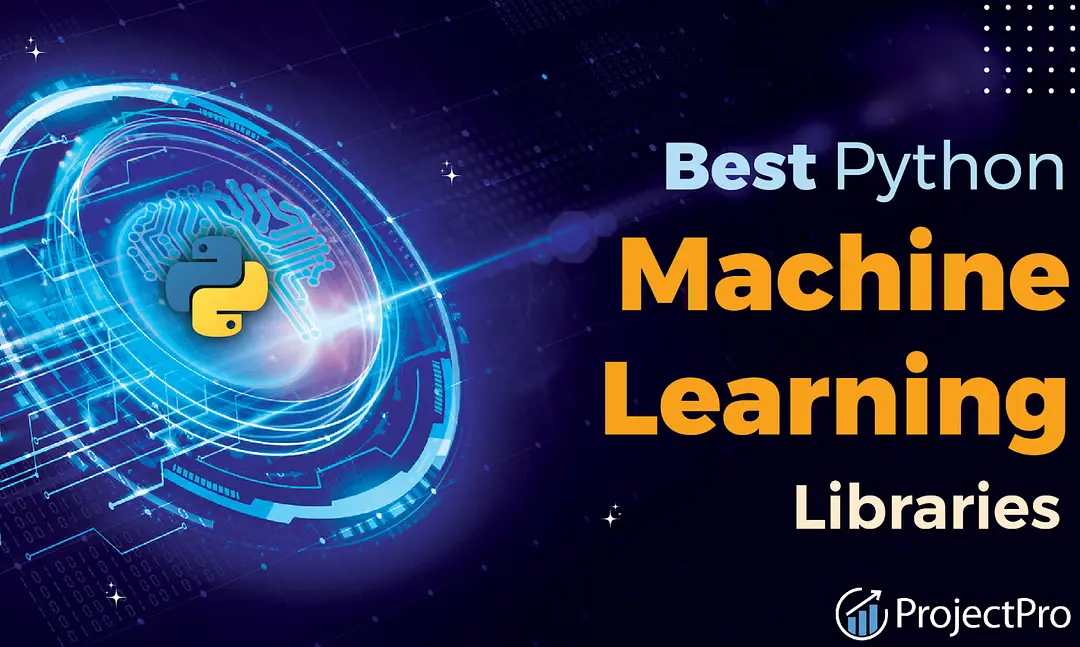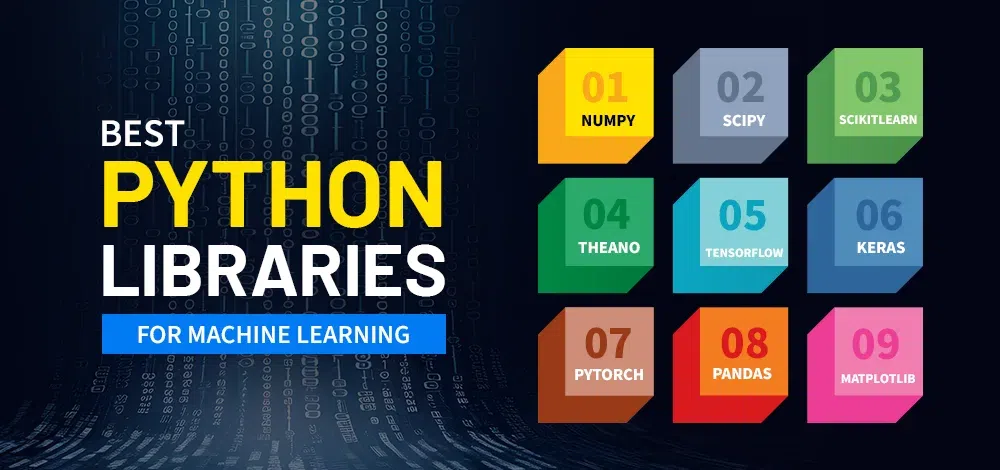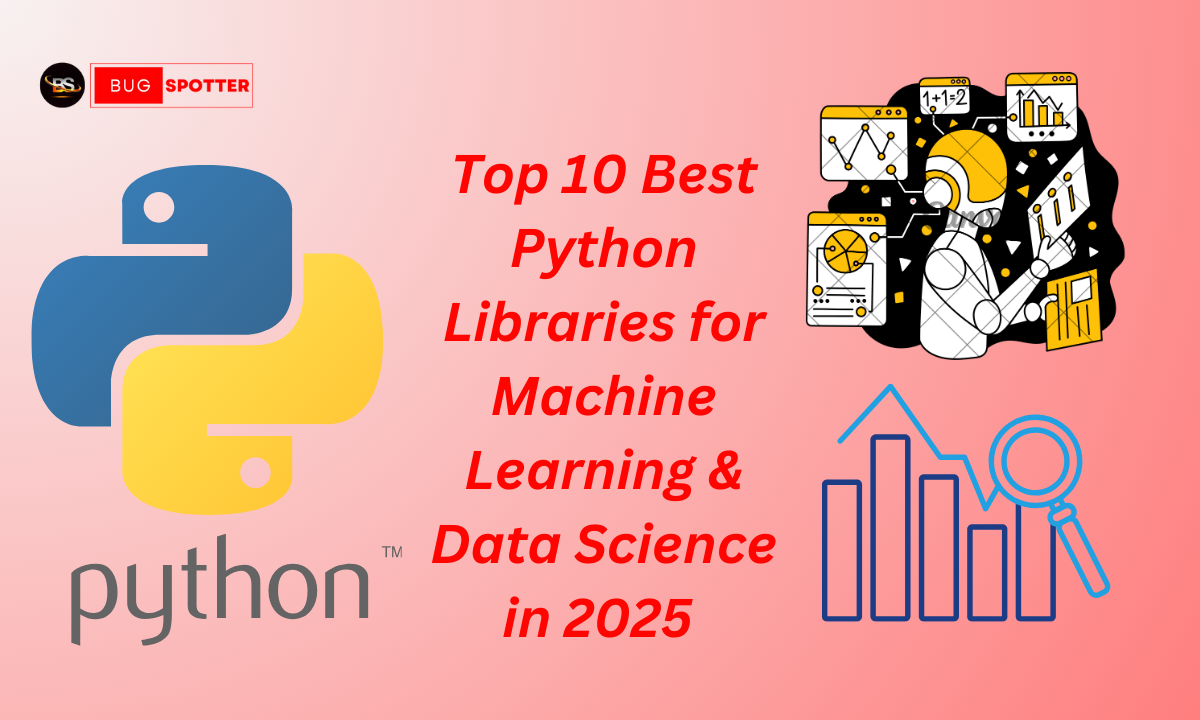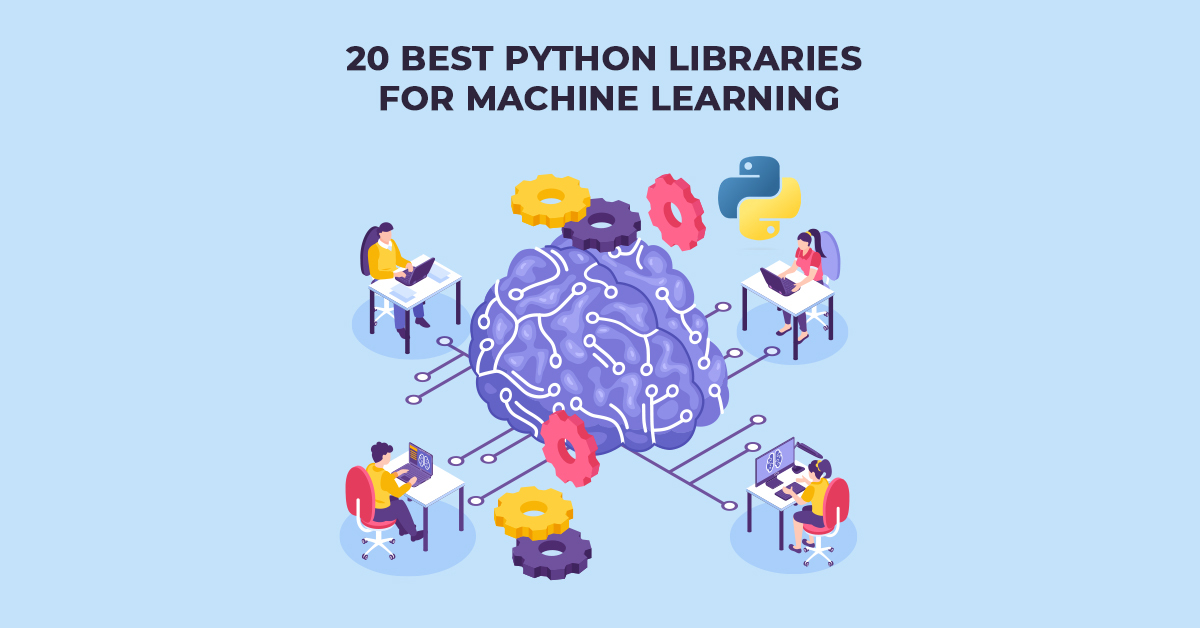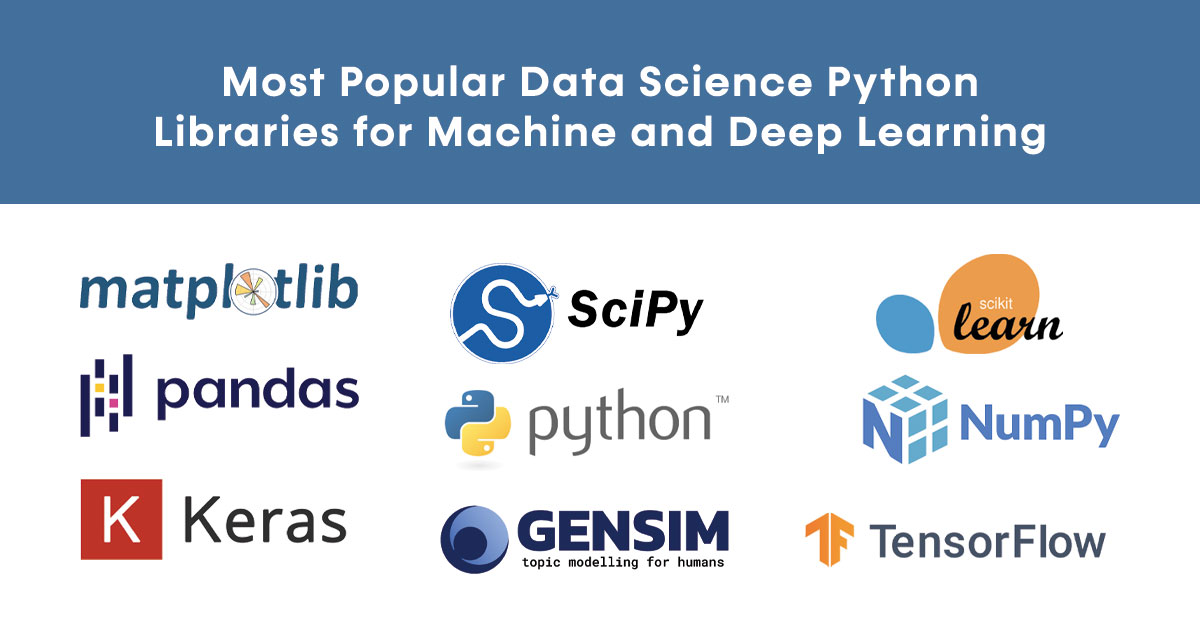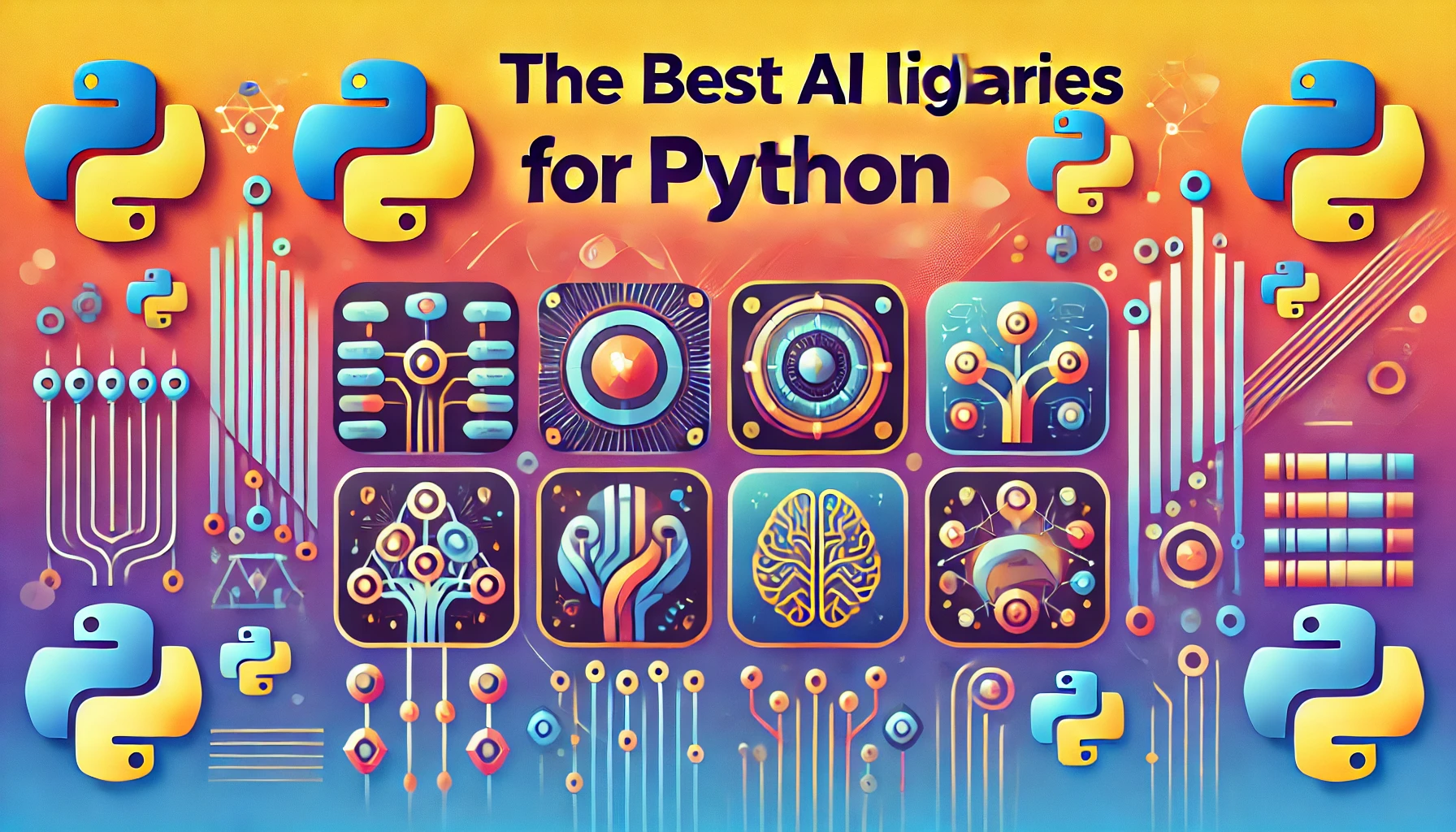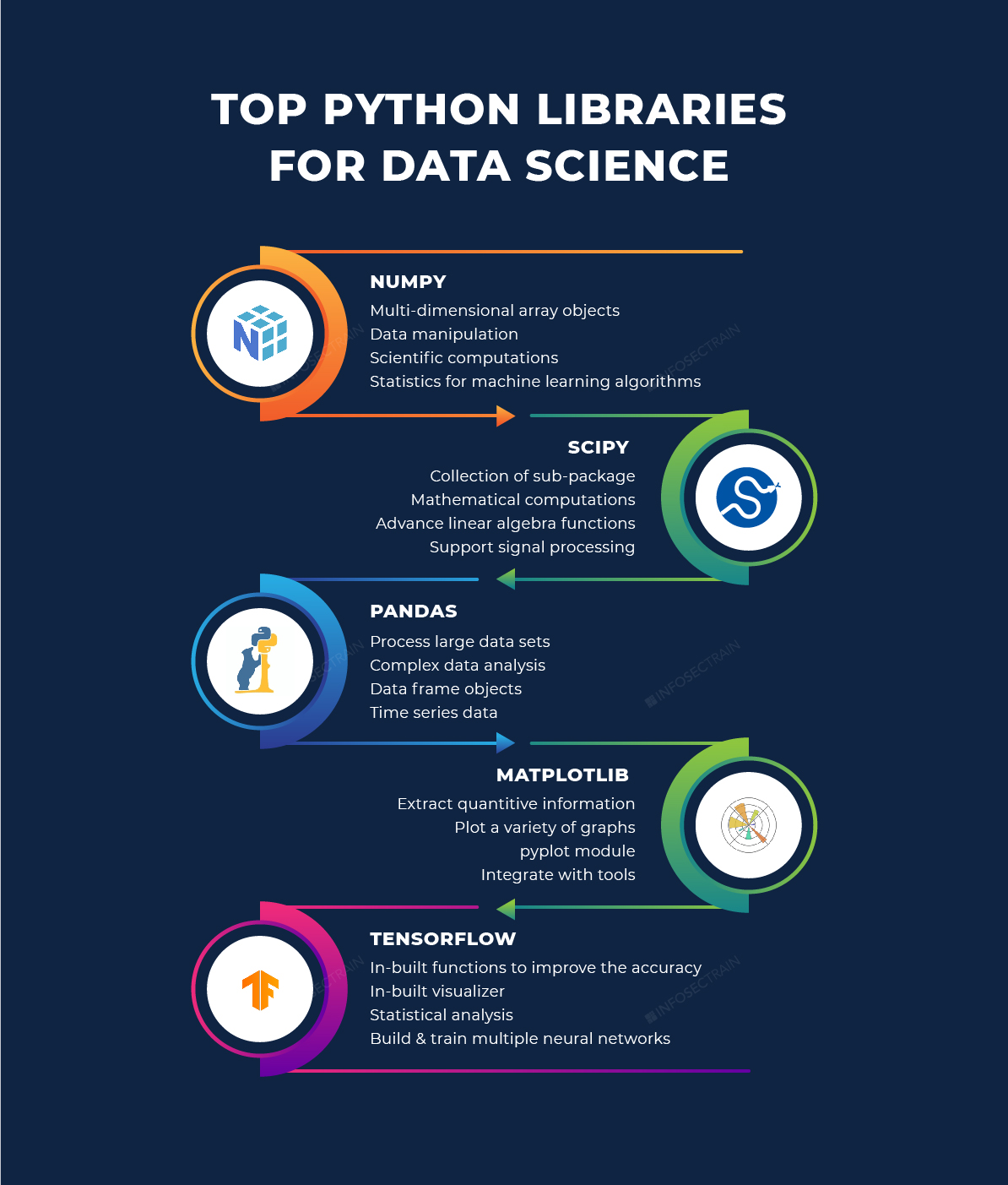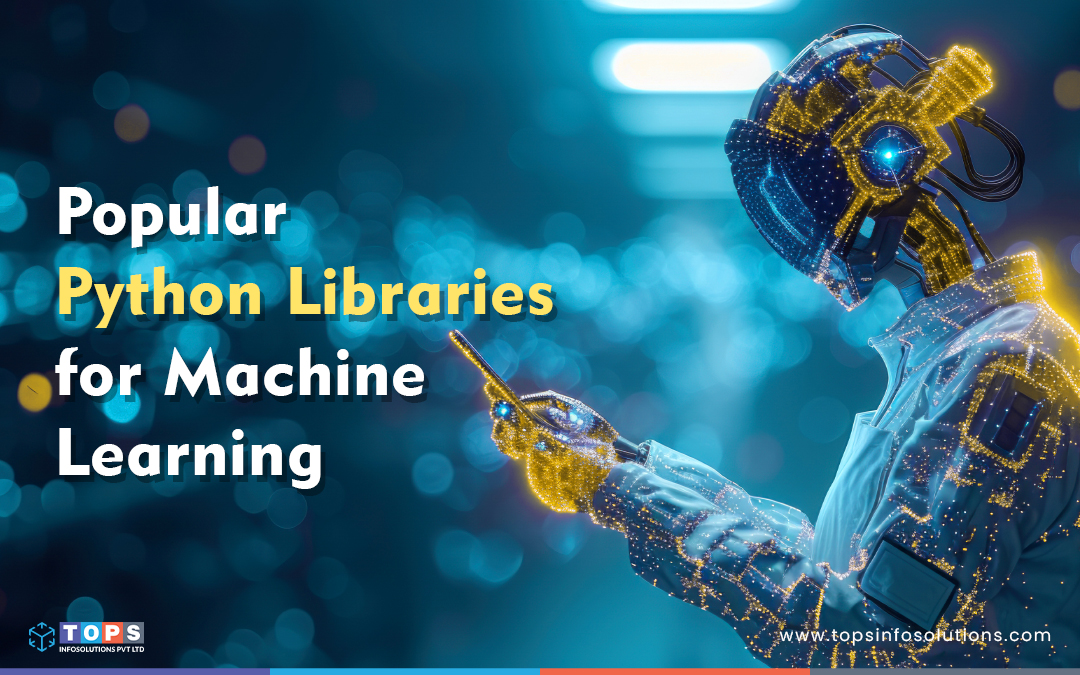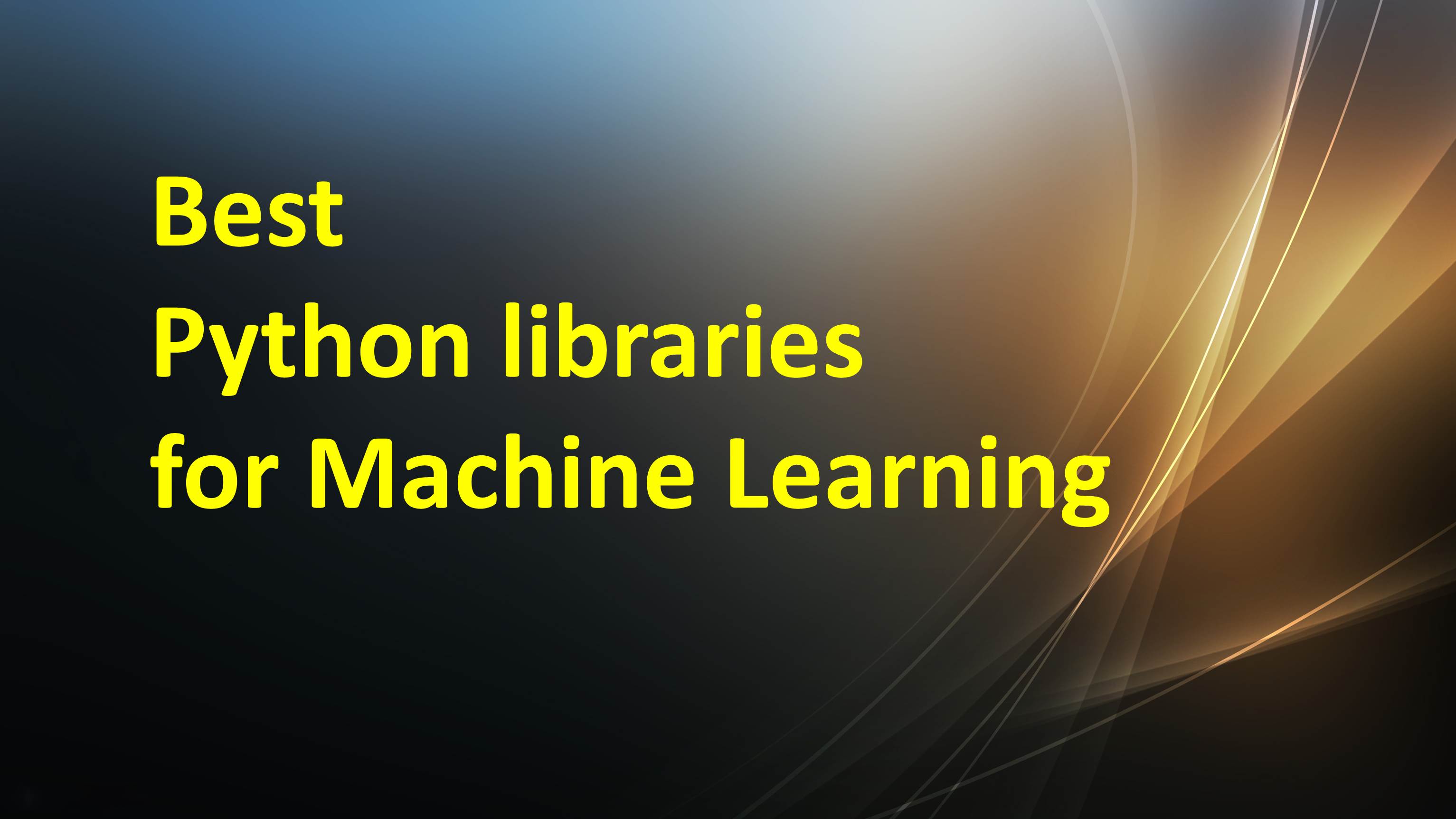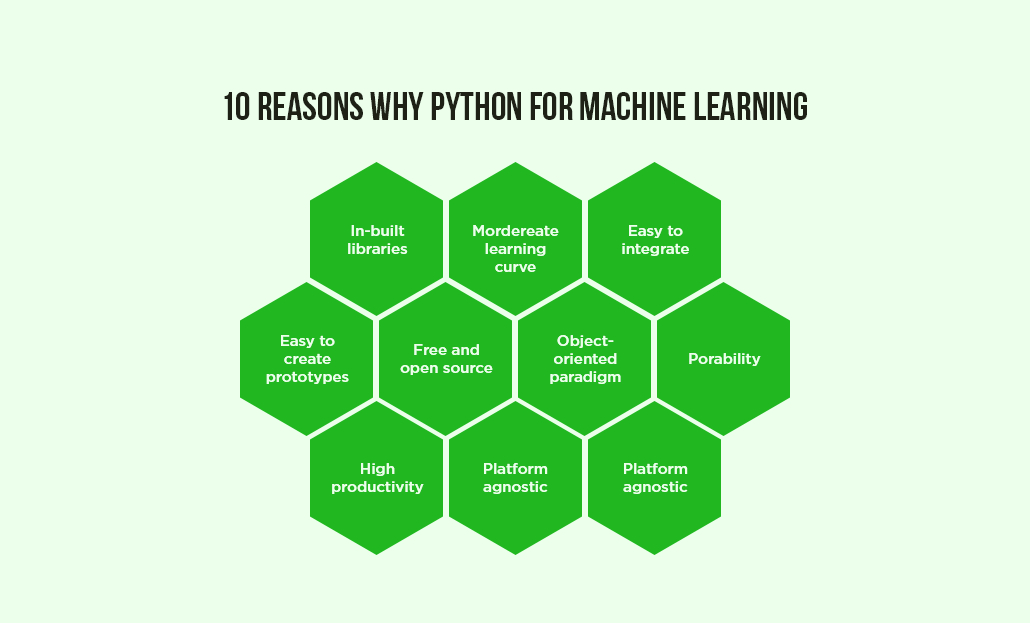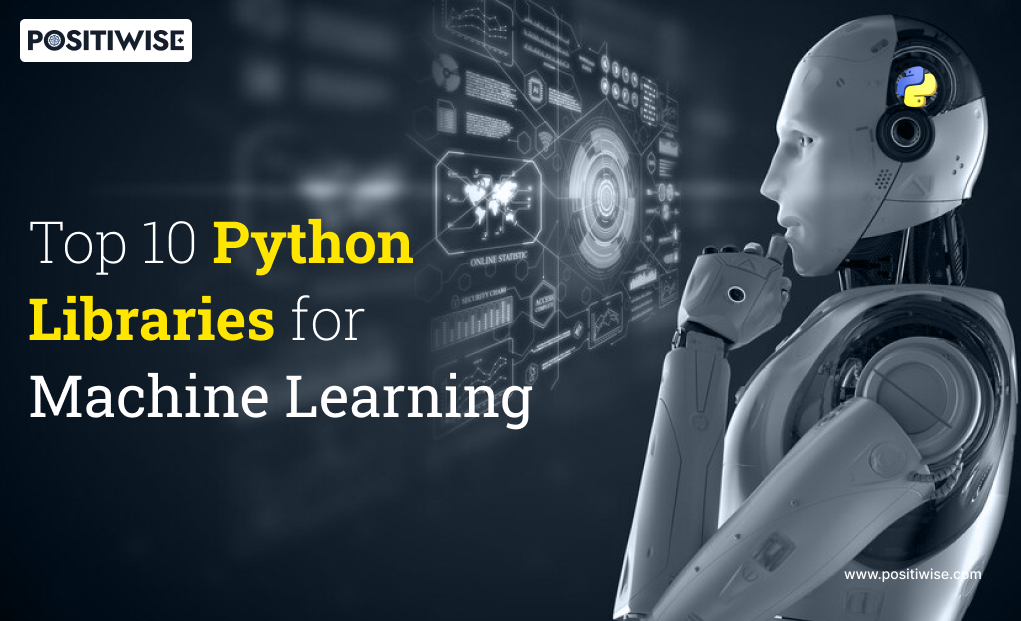Best Python Libraries For Machine Learning
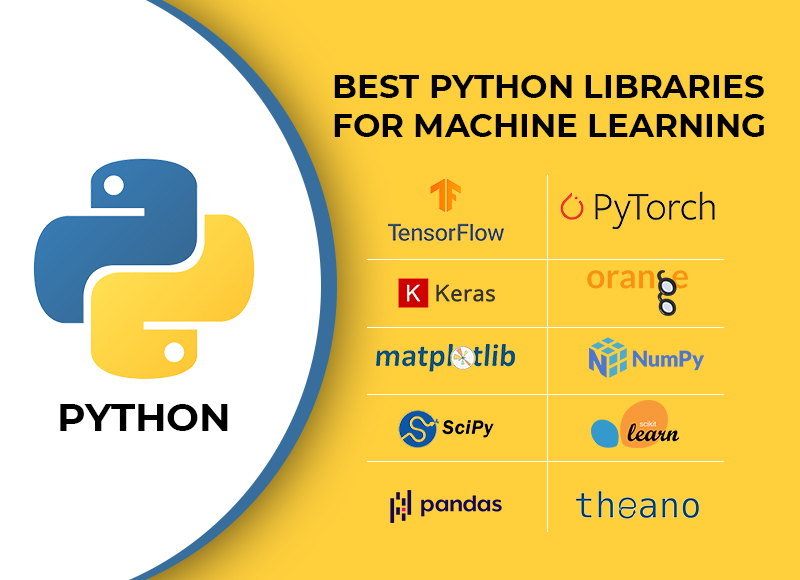
Imagine stepping into a bustling workshop, tools neatly arranged, ready to sculpt groundbreaking creations. In the realm of machine learning, Python stands as that workshop, brimming with an array of powerful libraries that empower data scientists and enthusiasts alike. Each library offers unique capabilities, transforming raw data into insightful models and predictive power.
This article explores some of the best Python libraries for machine learning. We'll delve into their functionalities, applications, and why they are considered essential tools in the modern data science landscape. Whether you're a seasoned expert or just starting your journey, understanding these libraries is key to unlocking the full potential of machine learning.
The Foundation: Numerical Computation and Data Manipulation
At the heart of many machine learning tasks lie numerical computation and data manipulation. Two libraries, NumPy and Pandas, form the bedrock upon which much of the analysis is built.
NumPy, short for Numerical Python, is the fundamental package for scientific computing in Python. It provides support for large, multi-dimensional arrays and matrices, along with a collection of mathematical functions to operate on these arrays efficiently.
Pandas builds upon NumPy, offering data structures like DataFrames that are intuitive for handling and analyzing structured data. Think of it as your digital spreadsheet on steroids, capable of managing vast datasets with ease.
The Power of Pandas
Pandas simplifies tasks like data cleaning, transformation, and exploratory data analysis. Its ability to handle missing data gracefully and perform complex filtering operations makes it indispensable in any machine learning workflow.
"Pandas is an incredibly powerful tool for data manipulation and analysis," says Dr. Anya Sharma, a leading data scientist at the Institute for Advanced Analytics. "Its intuitive syntax and comprehensive features make it a must-have for any aspiring data scientist."
Building Models: Scikit-learn and Beyond
Once the data is prepared, the next step involves building and evaluating machine learning models. Scikit-learn is a comprehensive library that provides a wide range of algorithms for classification, regression, clustering, and dimensionality reduction.
Scikit-learn emphasizes ease of use and provides a consistent interface for different machine learning models. Its documentation is excellent, making it a great starting point for beginners and a valuable resource for experienced practitioners.
Beyond the Basics: TensorFlow and PyTorch
For more complex tasks, particularly in deep learning, TensorFlow and PyTorch are the go-to libraries. Developed by Google and Facebook, respectively, these libraries provide the infrastructure for building and training neural networks.
TensorFlow is known for its scalability and production readiness, making it ideal for large-scale deployments. PyTorch, on the other hand, is favored for its flexibility and ease of debugging, appealing to researchers and those experimenting with novel architectures.
Both frameworks offer automatic differentiation, allowing researchers to define complex models and automatically compute gradients for training. This capability has revolutionized the field of deep learning.
Visualizing Insights: Matplotlib and Seaborn
No analysis is complete without effective visualization. Matplotlib is a foundational plotting library in Python, providing a wide range of plotting options.
Seaborn builds on top of Matplotlib, offering a higher-level interface for creating informative and aesthetically pleasing statistical graphics. Think of it as a stylist for your data visualizations.
These libraries allow you to communicate your findings effectively to both technical and non-technical audiences. From simple scatter plots to intricate heatmaps, visualization tools are crucial for understanding and presenting data.
The Ecosystem: A Thriving Community
The strength of Python's machine learning ecosystem lies not just in its libraries but also in its vibrant community. Open-source contributions and continuous development ensure these tools remain cutting-edge. This community is incredibly helpful and makes learning much easier.
Online forums, tutorials, and conferences provide ample opportunities for learning and collaboration. This spirit of shared knowledge ensures that even complex concepts are accessible to anyone willing to learn.
The journey into machine learning is a continuous process of learning and discovery. By mastering these essential Python libraries, you can unlock your potential to solve real-world problems and create innovative solutions.
